
Hope for a huge, ancient and imperilled fish
First Nations are leading efforts to make sure lake sturgeon can find a home in...
British Columbia’s efforts to ensure the safety of tailings storage facilities (TSFs) at the province’s dams have not lived up to government’s ‘world class’ ambitions, according to an internal audit conducted within the Ministry of Energy, Mines and Low Carbon Innovation and made public Friday.
The audit, designed to assess whether or not the province is doing enough to prevent a repeat of the 2014 Mount Polley tailings dam collapse, which sent 24 million cubic metres of mine waste into Quesnel Lake and surrounding waterways, found a lack of data, incomplete record and ambiguous regulations are undermining best practices when it comes to ensuring tailings facilities are effectively monitored and kept safe.
Tailings refer to waste rock and processing chemicals produced at mines that are often mixed with water and stored in enormous ponds or pits, created with manufactured dams. Tailings dams can be impressive and imposing structures. The Copper Mountain mine near Princeton, B.C., is currently seeking permission from the province to increase the height of its tailings dam to 255 metres, potentially taller than Vancouver’s tallest skyscrapers and over six times the height of the Mount Polley dam.
B.C. lists 70 tailings storage facilities at metal and coal mines across the province that are operating, closed or undergoing care and maintenance.
The audit found the ministry of mines is “inconsistent in its approach” to enforcing specific provisions of B.C.’s Health, Safety and Reclamation Code, which was updated in 2016 to incorporate recommendations from the expert panel which investigated the Mount Polley dam collapse.
The audit, conducted by Chief Auditor Andrew Rollo and a team within the ministry’s Mine Audits and Effectiveness Unit, found that overall the 2016 changes to the code have had a “positive impact” on the management of tailings facilities in B.C. But the report found that gaps in the regulation and “vague definitions” can “introduce confusion and present challenges for compliance verification and enforcement.”
The audit report adds that the ministry is inconsistent in enforcing some code provisions and in its approach to dealing with tailings facilities at mines which are not operating.
Although the ministry sets out expectations for mining companies, it has not “clearly documented how and under what authority these expectations may be enforced,” the audit says.
The audit puts forward seven recommendations to resolve inconsistencies and put a plan in place to ensure B.C.’s regulatory framework upholds best practices. Energy and Mines Minister Bruce Ralston said the ministry is “committed to implementing all seven recommendations put forward by the chief auditor and will continue our work to build a world-leading regulatory framework for TSFs here in B.C.”
The timing of this report is significant, Alan Young, director of the Materials Efficiency Research Group, told The Narwhal, because “B.C. has expressed strong ambitions to provide responsibly sourced metals to fuel electric vehicle batteries, to fuel the windmills of the future.”
As part of the province’s post-pandemic recovery, Ralston said he wants B.C. to be seen as an environmentally responsible jurisdiction for mining investment. At a Mining Day at the B.C. legislature in March, Ralston announced that the province’s improvements to mine permitting have made B.C. a leader “in the growing global environmental, social and governance investment movement.”
But the findings of the audit cast Ralston’s claims into question, potentially undermining B.C. ‘s positioning with investors and mineral buyers who want to source ethical and environmentally sound materials.
Young, who is also a B.C. Mining Jobs Task Force member, said B.C., because of its clean energy supply, stable government and respectful dealings with Indigenous communities, is well-positioned to supply the world with “responsibly sourced metals.”
The world needs resource metals right now,” Young said.
“At the same time we’ve heard from the auditor that there are significant areas of concern where B.C. needs to clean up its act. So we have a big challenge — if we want to meet our ambitions we have to act on the auditor’s recommendations because until we do we will fail.”
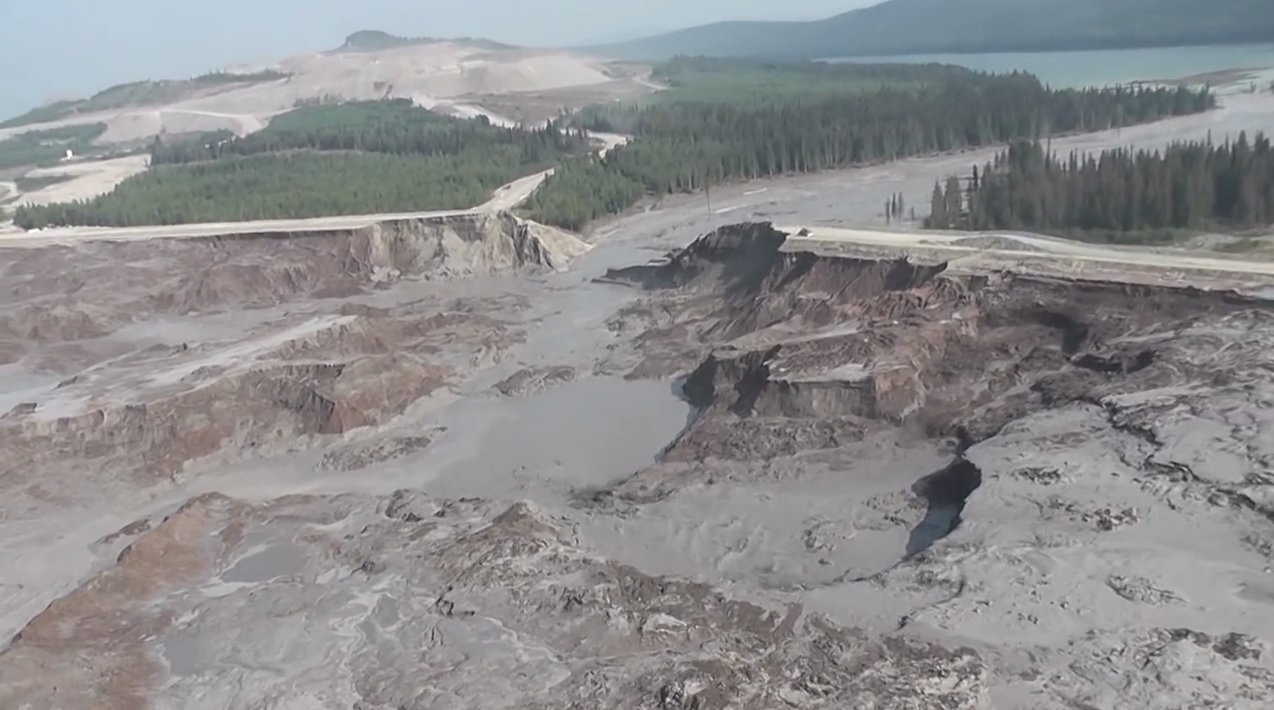
Following the Mount Polley tailings collapse, the danger of tailings dams came into even sharper focus in 2019 when a massive dam failure in Brumadinho, Brazil killed 270 people. The catastrophe resulted in 16 criminal charges for murder and the mine’s owner, Vale, paying $7 billion USD in compensation.
Globally, there have been two to four tailings pond ruptures a year. Studies completed in the wake of the Brumadinho failure found that, under current rules, more dam collapses could be expected. The Mount Polley expert panel concluded that, if mining companies continue with business as usual, B.C. could face an average of two dam collapses every 10 years.
The Brazilian disaster was a catalyst for the 2020 creation of the Global Tailings Standard, which, according to an international group of 142 scientists, communities and environment organizations, are needed to put an end to the deaths and environmental destruction caused by tailings dam failures.
The Brazil disaster also sparked warnings from international organizations that investors will avoid countries that do not have tight safety and ethical standards with assurances that mine waste is safely stored.
Francis Sullivan of ResponsibleSteel, which has developed international certification standards for responsible steelmaking, said the organization looks for mine certification programs that are able to identify high-risk mines likely to create social and environmental problems — such as those with poor mine tailings management.
“As buyers and investors become more knowledgeable about the specific issues relating to mining, there will be increased pressure on mining companies to demonstrate that they have identified and are managing these risks,” Sullivan told The Narwhal.
The push for new standards is significant for Canada, home to about 60 per cent of global mining companies, and in particular for B.C. where many companies are headquartered.
Mining is a foundational part of the province’s economy, employing more than 30,000 people, with a production value of $9 billion a year and “will play a large part in the province’s economic recovery following COVID-19 and in the global transition to a low-carbon economy,” according to a statement from the ministry provided to The Narwhal.
In 2020, B.C. amended the Mines Act to create a chief permitting officer position, separate from the chief inspector of mines, and created an investigative unit. But critics say more changes are needed and, unless the regulations are improved, investment is likely to be affected.
Bev Sellars, the former chief of the Xat’sull (Soda Creek) First Nation, told The Narwhal that right now, “nothing works well” when it comes to B.C.’s mining regulatory regime.
Sellars — in whose territory the Mount Polley mine is located — said the current rules don’t protect people and the environment.
“If B.C. thinks their regulations are world class then we better be prepared to say goodbye to more animals, birds and the finned who depend on the environment. Also, we better be prepared to have more humans get sick,” she said.
Ugo Lapointe, Canadian program coordinator for MiningWatch Canada, does not believe B.C. can claim to have globally competitive mining regulations, especially when it comes to overseeing tailings storage facilities.
The overriding concern is that, despite a recommendation from the panel that public safety must be emphasized, the province’s regulations do not specify that safety must come above economic considerations, Lapointe said.
“When they address the safety design considerations, they list economic factors as being one consideration to mix into the decision. This should be removed,” he said.
A MiningWatch report, Safety First: Guidelines for responsible Mine Tailings Management, recommends the ultimate goal of tailings management must be zero tolerance for human fatalities and harm to the environment.
That means that, if a company cannot afford to build a safe dam using best available technology or pay for more expensive dry stack tailings, cannot put up an adequate bond, is unwilling to prepare for worst-case scenario extreme events and cannot ensure full cleanup costs are readily available, the project should not be approved, Lapointe said.
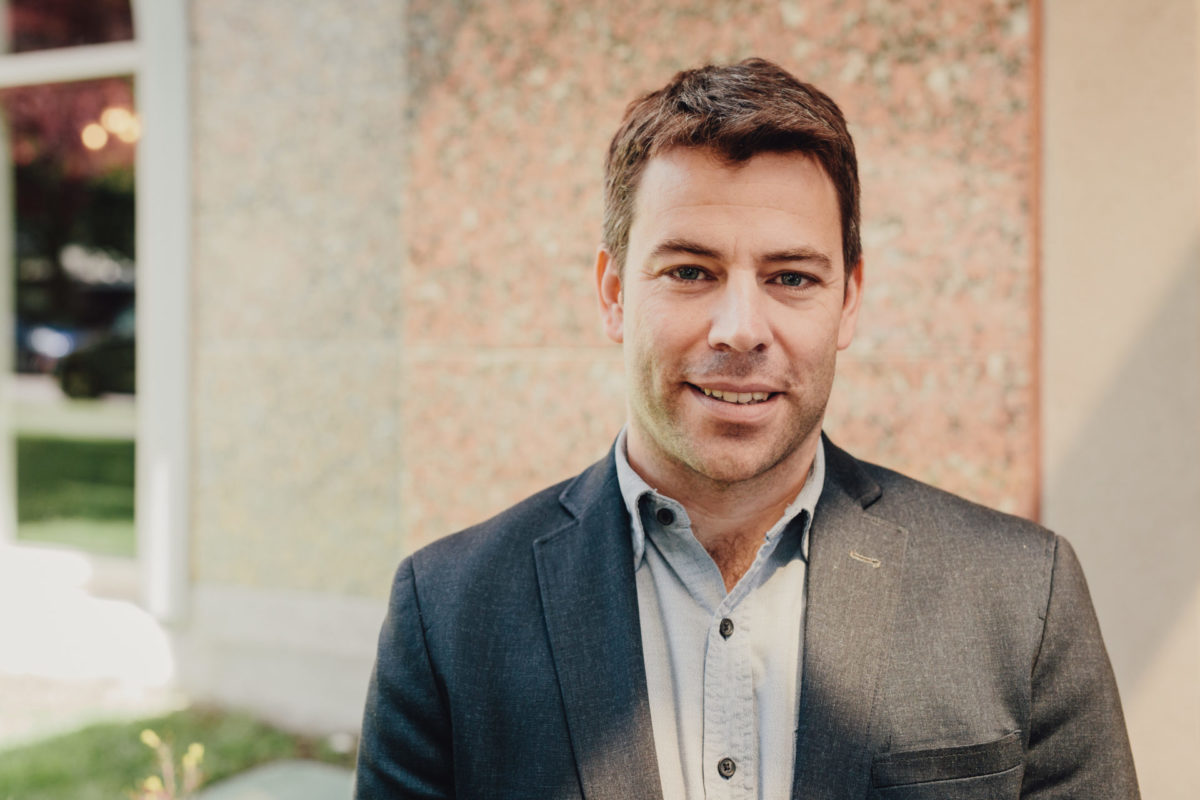
“If it’s more costly than you are able to pay for, then don’t build it. As a company, you need to redesign your project or you need to wait for the metal prices to be higher. This is what we mean by safety first,” said Lapointe, who is also pushing for boards of directors to be held accountable for failures.
“If one of your facilities fails, there should be a direct consequence and, if you are a board member, you should be banned from any other board member position in Canada. … The fines are pitiful and there’s no real sanctions to the corporation or the board of directors,” Lapointe said, pointing to the recent $60 million penalty under the federal Fisheries Act levied against a subsidiary of Teck Resources for discharging selenium and calcite into Elk Valley waterways in 2012.
The fine is the largest issued against a company in Canada, but pales beside the company’s revenue of $4.5 billion from coal in 2012.
Much larger fines, in the range of billions of dollars, are often issued in the U.S. and companies do change their behaviour if the deterrents are high enough, Lapointe said.
In the wake of the Mount Polley disaster, B.C. laid no charges against the company. Sellars launched a private prosecution against Mount Polley, arguing the company violated 15 environmental and mining laws that resulted in the tailings pond collapse, but that case was eventually quashed in the courts.
Sellars said she believes it is just a matter of time until another tailings pond disaster happens in B.C.
“The environment has to be put ahead of industry making money. The government allows short cuts so the companies can rake in more money. That has to stop,” she said.
Sellars said she’d also like to see an independent organization set up to monitor mining. “Governments push mining by providing incentives and then supposedly are also the ‘watchdogs’ of the industry,” she said. “That does not work.”
The audit points to a lack of cooperation between B.C. ministries responsible for safeguarding the environment and also noted the presence of confusing rules that are difficult for the province’s mine monitors to enforce.
These issues were among the many problems documented in 2016 when then-auditor-general Carol Bellringer issued a scathing report on compliance and enforcement in B.C.’s mining sector.
Concerns about the ministry’s geotechnical team also surfaced both in Bellringer’s report and the new audit, which concludes there are continuing problems with targets and priorities. The audit recommends that the ministry should have written policies for the lifecycle of a mine, including document reviews and inspections.
“There is a lack of documented priorities, policies or procedures for most of the work that the geotechnical engineering team routinely performs with respect to TSFs (including inspections, managing annual reporting and review of permit applications) and a lack of formal strategy for addressing compliance issues at non-operating TSFs,” the audit says.
The Mount Polley review panel found that the disaster was caused by a design flaw that did not recognize a weak layer of glacial soil beneath the dam foundation and, although ministry staff were not responsible for the design of the Mount Polley dam, Bellringer pointed out in her report that ministry staff failed to perform geotechnical inspections at the mine for several years, even though the policy is for a minimum of at least one inspection a year.
That has changed, according to the ministry and a spokesperson said geotechnical inspections are now conducted annually province-wide.
“Sites are prioritized each year based on whether they have active TSFs or other higher-risk infrastructure, site operational status and compliance history,” said an emailed statement from the ministry in answer to questions from The Narwhal.
The audit noted that 72 per cent of mine sites inspected are found to be in compliance with B.C.’s four code requirements, which include completing a 2018 Dam Safety Inspection report, having an Engineer of Record, having a tailings storage facility qualified person and having an independent tailings review board. For the 28 per cent of mines that did not meet those code requirements, seven mines were identified as representing high or very high consequence rating when it comes to tailings safety. Another four were listed as presenting significant consequence.
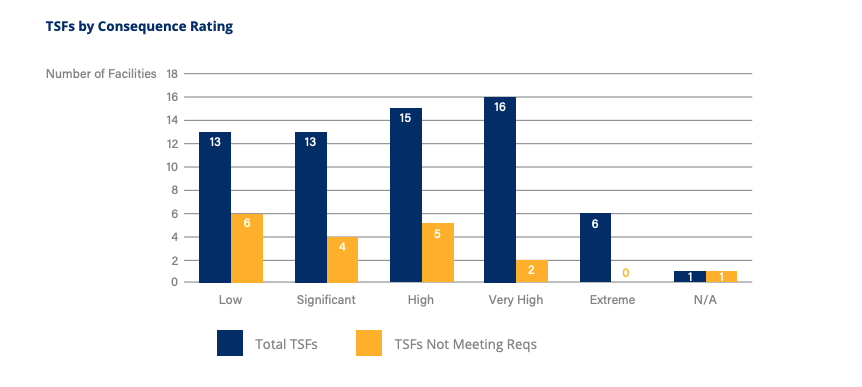
The audit elicited a response from the mine’s ministry, that outlines steps already being taken to improve the safety of tailings facilities, including better collaboration with B.C.’s Ministry of Environment and Climate Change Strategy and the Ministry of Forests, Lands, Natural Resource Operations and Rural Development. An action plan from the ministry outlines efforts to analyse B.C.’s safety code for clarity and establishing a team of safety inspectors, including those with geotechnical expertise.
Tailings safety expert Dave Chambers, a geophysicist at the Montana-based Center for Science in Public Participation, agrees that there should be more emphasis on safety and he is disappointed the ministry’s audit did not use broader criteria to look at tailings regulations.
“I would like to see something in the regulatory guidance that says ‘we really want to make safety paramount.’ The B.C. regulation doesn’t say that. You can assume that’s the guiding principle, but it’s not clearly stated,” he said.
“If you don’t clearly state it, it becomes only one of the considerations. If you put safety on an equal level with cost, cost is going to win every time and that’s the way it works right now.”
Chambers is encouraged that B.C. is looking at the regulations, but said many questions are left unaddressed.
For example, some jurisdictions, such as Brazil, Chile, Ecuador and Peru, are banning upstream tailings dams — structures where new levels of the dam are built on top of previously deposited tailings — but B.C. regulations are silent on the issue even though upstream dams are known to be the most risky design, especially in wet climates or areas prone to earthquakes.
“I think, if you are going to do an evaluation, you at least need to ask the question of whether we need to consider this,” Chambers said.
One of the biggest controversies is wet versus dry mine closures.
The expert panel recommended that filtered tailings, or dry stack, be used instead of storing mine waste underwater behind dams, but most mines, including those still in the provincial approval process, continue to use tailings ponds.
However, wet closures are usually cheaper, so are favoured by mining companies and B.C. is avoiding the question by saying each application is site specific, Chambers said.
“To me that’s just a copout. The way I would like to see jurisdictions approach this is to start with an assumption of a dry closure. Then, if you can demonstrate through a risk-assessment process that a wet closure poses less long-term risk to the public — not to the mining company — it could be justified. Otherwise it should be a dry closure because it minimizes the potential for a catastrophic failure,” Chambers said.
A ministry background statement says every mine is different, so each facility demands a unique solution.
“Dry-stacking is one example of best available technologies, but it is not the only method for tailings management,” it says, emphasizing that proponents must demonstrate they are using the best available technology for the site.
Dry storage has been approved for the Silvertip Mine in northern B.C., but almost all other mines continue to use wet tailings storage.
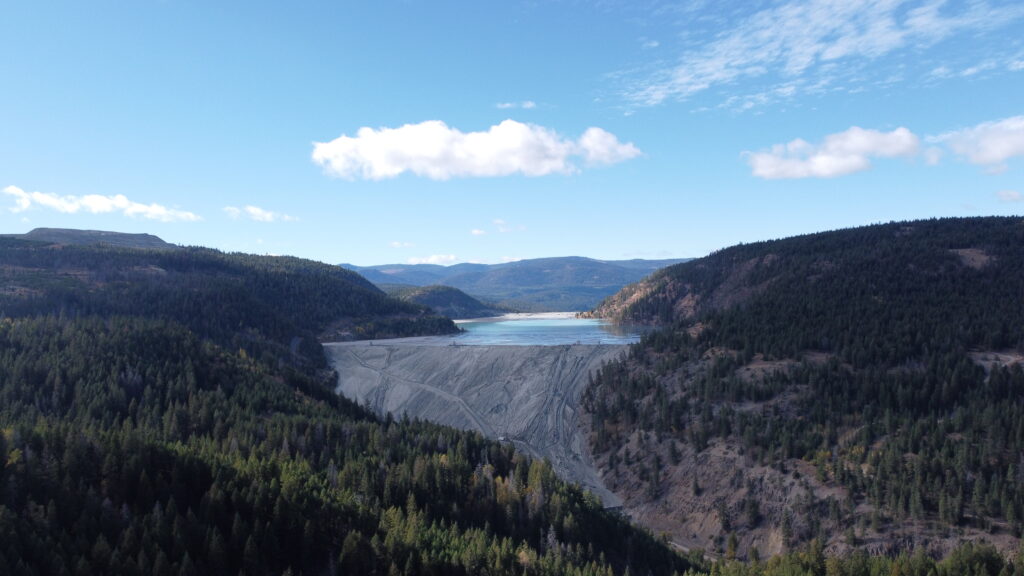
In the months leading up to the audit’s release, claims that B.C. has world-class regulations have come under increasing fire from the province’s closest neighbours in the U.S.
Tailings dams in the northwest of the province, near the border with Southeast Alaska and close to vital salmon-bearing rivers such as the Taku, Unuk and Stikine, are an ongoing worry for Alaskans and 25 Washington state legislators have written to Premier John Horgan calling for policy reforms to protect transboundary watersheds and downstream communities.
An additional concern for Southeast Alaska residents is the absence of commitments of financial help in the case of a disaster and Chambers questions why B.C. has not ensured that there would be adequate compensation for those affected if there is another failure, similar to Mount Polley.
“There’s really no mechanism to assure financial compensation for those that would be impacted downstream,” he said.
The effects of B.C.’s mines on transboundary rivers is now under scrutiny by the Inter-American Commission on Human Rights, which has agreed to consider a petition submitted by the Southeast Alaska Indigenous Transboundary Commission, a coalition of 15 tribes, claiming that B.C. mines close to the border are violating their rights because of threats to fish, wildlife and plants from acid mine drainage and fears that there could be another tailings dam collapse.
The application from the Copper Mountain mine to increase the height of its tailings dam in southern B.C. in the wake of the Mount Polley disaster has also elicited letters of concern from U.S. politicians downstream.
In May, Washington State senator Jesse Salomon wrote a letter to Horgan and Ralston, noting B.C. policy “falls short of holding mining interests accountable for their impacts, exemplified by the costs of the Mount Polley disaster falling on taxpayers.”
“Mining companies have clearly demonstrated their willingness to gamble while playing with house money,” the senator wrote. “My hope is that your forthcoming policy would correct that, such that the burden of liability and therefore incentive to avoid disaster rests with the mining company.”
“This concern is not pedantic or hypothetical,” the letter goes on. “Tailings storage at the Copper Mountain mine poses substantial risk to Washington residents and resources.”
Calvin Sandborn, legal director at the University of Victoria’s Environmental Law Centre, challenges claims that B.C.’s mining standards are among the best in the world and points to a March letter to B.C. from 25 U.S. representatives and senators who are worried about the downstream effects of coal and metal mines close to the border.
“Any statement about British Columbia’s standards being some of the best in the world does have to be questioned. Talk to the Americans that are downstream of the coal mines in the Elk Valley. … Our standards are way weaker than American standards,” Sandborn said.
Canada and B.C. have been dragging their feet over matching U.S. selenium-pollution standards, instead, allowing concentrations of the pollutant at two-and-a-half times what is permitted in the U.S., Sandborn pointed out.
“How does that make us world class?” he asked.
“There are a lot of Americans that are really P.O.ed with the Canadian and B.C. governments because they’re finding high levels of selenium in their fish because our levels are so inadequate.”
Selenium, which washes out of piles of waste rock from the mines, can cause fish deformities and affect reproduction.
In February the U.S. Environmental Protection Agency approved selenium levels below 0.8 parts per billion for Lake Koocanusa, the lake which straddles the border downstream from the Elk Valley’s coal mines, while B.C. standards are not to exceed two parts per billion.
“They were negotiating for years trying to set a common standard for that lake and finally the Amercians just got frustrated after years of negotiation and just went ahead,” Sandborn said.
The province is working to determine selenium water quality objectives for Lake Koocanusa “that would be protective of all designated uses, in accordance with B.C. science-based policies and procedures,” according to the ministry.
Meanwhile, local governments in Skagit County, Washington and more than 200 conservation, recreation and wildlife groups, together with Tribes and First Nations, are upping the fight against an application by Imperial Metals — owners of Mount Polley — for a mining permit in the headwaters of the Skagit River, an area known as the Donut Hole.
“This is an unacceptable risk to the lives and livelihoods of an entire region,” said Laurie Gere, Mayor of Anacortes.
Sandborn believes the mining industry continues to have a disproportionate say in regulating the industry, which reinforces the ongoing problem with enforcement.
“They need to put some resources into it,” said Sandborn, who wants to see the B.C. government bring in help from the Indigenous Guardians.
“Mining has not been a priority for this government and it needs to move to a number one priority. If you kill a watershed, you are killing it for thousands of years,” he said.
Then there is the question of taxpayers picking up the cost of mine cleanups because the province does not demand adequate bonding from companies to cover the cost of reclamation or ensure there are hefty — and enforceable — financial penalties for breaking the rules.
“B.C. is still far, far, short of getting adequate bonding on their mining operations. They are still not requiring full bonding from companies,” Sandborn said.
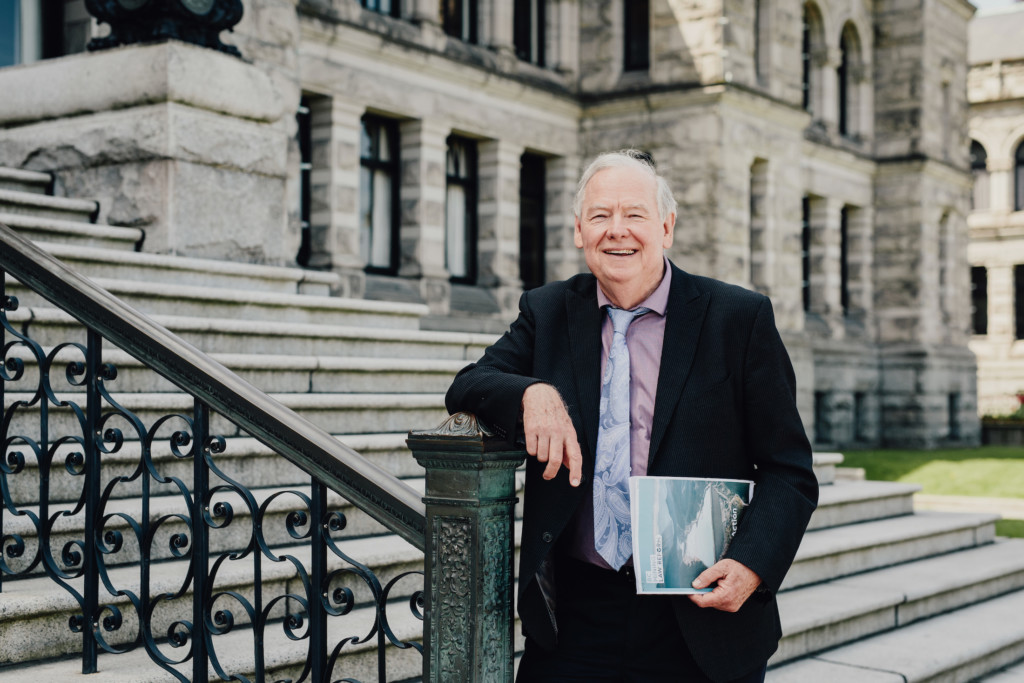
A report from B.C.’s Chief Inspector of Mines says that, in 2019, there was $1.9 billion of bonding in place — up from $1.6 billion the previous year — for an estimated liability of $2.8 billion.
“We’re working to ensure owners of large industrial projects are bonded, moving forward, so that they — not British Columbians — pay the full costs of environmental cleanup if their projects are abandoned,” according to the ministry background statement.
But, for those living and working downstream of B.C. mines, those assurances are not yet sufficient and there are continuing concerns that B.C.-based mining companies are reaping the profits, while downstream neighbours shoulder the risks.
— With files from Carol Linnitt
Updated: June 18, 2021 at 2:39 p.m. PT: This article was updated to remove reference to Bev Sellar’s role as chairperson of First Nations Women Advocating Responsible Mining, a group that is now defunct.
Get the inside scoop on The Narwhal’s environment and climate reporting by signing up for our free newsletter. A $335 million funding commitment to fund...
Continue reading
First Nations are leading efforts to make sure lake sturgeon can find a home in...

We’re excited to share that an investigation by The Narwhal is a finalist for the...

A new documentary, Nechako: It Will Be a Big River Again, dives into how two...
